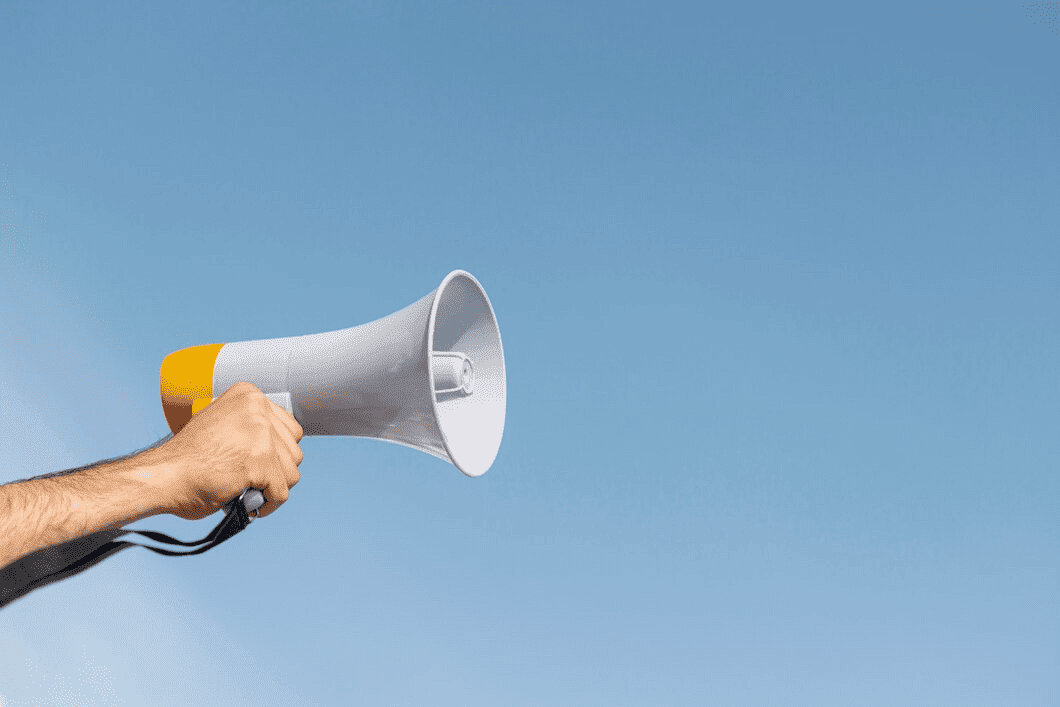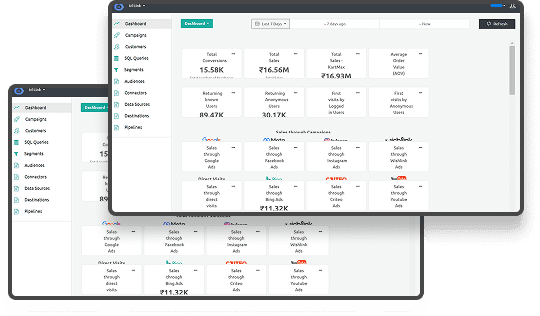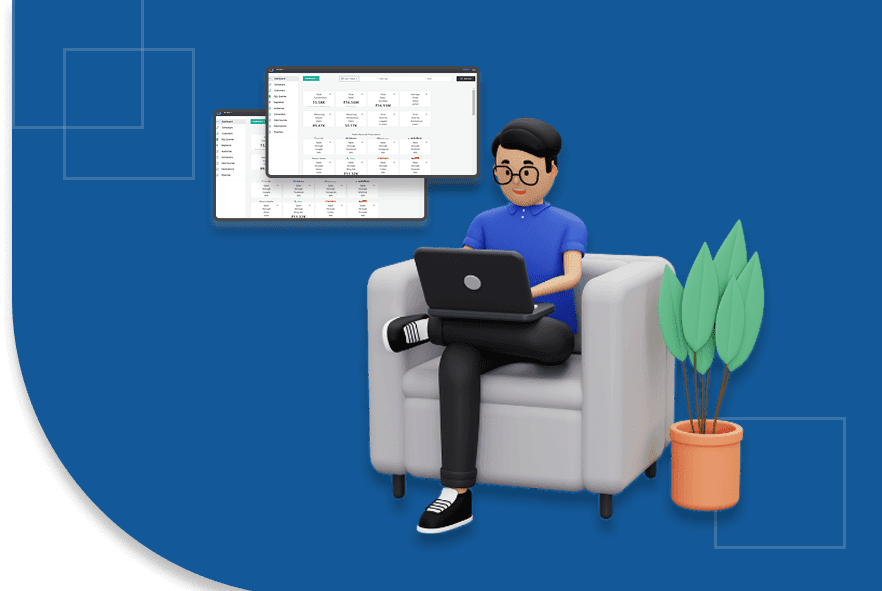Understanding and Implementing Campaign Optimization
Ready to turn your average campaigns into high-performing ones? Campaign optimization holds the key.
Campaign optimization is what transforms good campaigns into great ones, ensuring every dollar spent delivers maximum results. You're not alone if you've ever felt overwhelmed by your campaign data or frustrated by underperforming ads. Many marketers face these challenges, but the good news is that with the right strategies and tools, you can turn your campaign data into actionable insights.
Campaign optimization involves fine-tuning your marketing efforts to achieve the best possible outcomes. It's about making informed decisions based on data to enhance the performance of your campaigns. By focusing on optimization, you can improve your return on investment (ROI), reach your target audience more effectively, and stay ahead of the competition.
In this blog, we'll explore what campaign optimization is, why it's essential for your marketing success, and how you can implement effective optimization strategies.
What is Campaign Optimization?
Campaign optimization is the process of improving the performance of your marketing campaigns by making data-driven adjustments and refinements. It involves analyzing various aspects of your campaigns to identify what’s working and what’s not, then implementing changes to enhance effectiveness and efficiency. Whether you’re focusing on increasing conversions, reducing costs, or improving engagement, campaign optimization helps you achieve your specific marketing goals.
At its core, campaign optimization is about continuous improvement. It’s not a one-time task but an ongoing process that requires regular monitoring, testing, and tweaking.
There are different types of campaign optimization, each tailored to specific marketing channels and goals. For example, search engine marketing (SEM) optimization focuses on improving your ads' visibility and click-through rates on search engines. Social media campaign optimization aims to enhance engagement and conversions on platforms like Facebook, Instagram, and Twitter. Email marketing optimization involves refining your email content and targeting to increase open rates and click-through rates. Understanding the nuances of each type allows you to apply the right strategies to achieve optimal results.
Now that we’ve defined campaign optimization let's explore why it's crucial for your marketing success.
Importance of Campaign Optimization
Campaign optimization is vital for several reasons, each contributing to the overall success and sustainability of your marketing efforts. Let’s read how:
Enhancing ROI
One of the primary goals of any marketing campaign is to generate a positive return on investment (ROI). Campaign optimization helps you maximize your ROI by ensuring that your marketing dollars are spent efficiently. To understand how to calculate ROI effectively, explore our How to Calculate What Customer Lifetime Value Is? guide.
Improving Targeting
Effective targeting is at the heart of successful marketing campaigns. Campaign optimization allows you to refine your audience segments, ensuring that your messages reach the right people at the right time. For strategies on behavioral segmentation, check out our Defining Behavioral Segmentation in Marketing with 10 Examples and Strategies guide.
Maximizing Budget Efficiency
Marketing budgets are often limited, and it's crucial to make every dollar count. Campaign optimization ensures that you are getting the most out of your budget by focusing on strategies that deliver the highest impact. Learn more about maximizing your budget in our What is Programmatic Advertising and How Does It Work? article.
Enhancing User Experience
A well-optimized campaign not only drives better results but also enhances the user experience. By delivering more relevant and personalized content, you can create a more engaging and satisfying experience for your audience. This builds trust and loyalty, encouraging repeat interactions and long-term customer relationships. For insights on crafting personalized experiences, explore our Crafting Unique Experiences with First-Party Data guide.
Adapting to Market Changes
The digital marketing landscape is constantly evolving, with new trends, technologies, and consumer behaviors emerging regularly. Campaign optimization helps you stay agile and adapt to these changes swiftly. For more on adapting to market changes, visit our Understanding Multi-Touch vs. Last-Touch Attribution article.
By recognizing the importance of campaign optimization, you can prioritize it within your marketing strategy and take proactive steps to enhance your campaign performance. This leads to better results and ensures that your marketing efforts are sustainable and scalable in the long run.
With this importance in mind, let's look at the process of optimization.
Process of Campaign optimization
Campaign optimization is a dynamic process that requires continuous adjustments to improve performance. By following a structured approach, you can refine your strategies and ensure that your campaigns are always aligned with your business goals. Here are the key steps to take in the optimization process:
- Set Clear Goals: Begin by defining specific, measurable objectives for your campaign. Whether it’s increasing sales, boosting engagement, or improving brand awareness, knowing exactly what you want to achieve is crucial.
- Track Performance: Use analytics tools to monitor key metrics like CTR, conversion rates, and CPA. Data is the foundation for optimization, so ensure you're collecting and analyzing the right information.
- Test Variations: Experiment with different ad creatives, copy, and calls-to-action through A/B testing. Small changes can make a big difference in improving performance.
- Refine Targeting: Focus on the audience segments that bring the most value. Analyze data to identify high-converting users and tailor your messaging to resonate with them.
- Adjust Budget & Bidding: Allocate more budget to top-performing segments or ads. Review your bidding strategies regularly to ensure you're maximizing ROI.
- Optimize User Experience: Ensure a seamless experience for your audience, from the ad to the landing page. Fast load times, intuitive navigation, and relevant content are key factors for improving conversions.
- Monitor & Iterate: Optimization is an ongoing process. Regularly review your campaign’s performance and adjust your strategies based on the data you collect. This continuous loop of testing and refining ensures sustained growth.
By following these steps, you’ll keep your campaigns fine-tuned and responsive to real-time data, ensuring long-term success and better results with each iteration.
Now, let's look at the tools that can facilitate campaign optimization.
Essential Tools for Campaign Optimization
To effectively optimize your campaigns, you need the right tools that provide insights, automate tasks, and streamline your marketing efforts. Here are some essential tools that can help you achieve campaign optimization:
Analytics Platforms
Analytics platforms are the backbone of campaign optimization, providing the data and insights needed to make informed decisions.
Marketing Automation Tools
Marketing automation tools like HubSpot, Marketo, and Mailchimp help you streamline your marketing efforts by automating repetitive tasks such as email campaigns, social media posts, and lead nurturing. Explore our Best Tools for Tracking Digital Properties section for more details.
Tag Management Systems
Tag management systems (TMS) like Ingest IQ are essential for managing and deploying tracking tags on your website without requiring extensive technical knowledge. A robust TMS allows you to add, update, and remove tags easily, ensuring that your tracking remains accurate and up-to-date.
Customer Relationship Management (CRM) Systems
CRM systems like Salesforce, Zoho CRM, and HubSpot CRM help you manage and analyze customer interactions and data throughout the customer lifecycle. These tools enable you to segment your audience, track customer journeys, and personalize your marketing efforts based on customer behaviour and preferences. For more on CRM integration, visit our Understanding What is a Customer Data Platform guide.
Email Marketing Platforms
Email marketing platforms such as Mailchimp, Constant Contact, and SendinBlue are crucial for creating and managing email campaigns. These tools offer features like email templates, automation workflows, segmentation, and detailed analytics that help you optimize your email marketing efforts.
How Ingest Labs Might Help You
Ingest Labs offers a suite of products designed to optimize your marketing campaigns through advanced data collection, seamless integration, and real-time insights. Here's how Ingest Labs can enhance your campaign optimization:
- Real-time Data: With Ingest IQ, you can access real-time data streaming, providing immediate insights that allow you to optimize campaigns on the fly.
- Server-Side Tagging: Ingest IQ supports server-side tagging, ensuring faster load times and more accurate data collection without relying on third-party cookies.
- Seamless Integrations: Ingest Labs offers over 100+ pre-built integrations, enabling smooth connections with your existing analytics, CRM, and marketing automation tools.
- Improved Data Accuracy: By collecting first-party data through server-side tracking, Ingest Labs helps you understand customer behavior with more precision, enhancing campaign targeting.
- Enhanced User Experience: By optimizing website performance through tag management, Ingest Labs helps reduce bounce rates, ensuring a smoother, faster experience for your users.
By integrating Ingest Labs into your marketing stack, you can streamline your campaign optimization efforts, gain deeper insights into user behavior, and make more data-driven decisions that boost your ROI.
Equipped with the right tools, the next step is to understand how to measure the success of your optimized campaigns.
Key Metrics to Track for Optimization
Measuring the success of your campaign optimization efforts requires tracking specific metrics that provide insights into your campaign’s performance. Here are the key metrics you should focus on:
Conversion Rate
The percentage of users who take a desired action, like making a purchase or signing up. A higher conversion rate indicates effective persuasion.
Click-Through Rate (CTR)
Measures how many people click on your ad after seeing it. A high CTR shows that your ad is grabbing attention.
Cost Per Acquisition (CPA)
The cost of acquiring a new customer or lead. Lower CPA means more cost-effective customer acquisition. Optimize targeting and ad relevance to reduce CPA.
Return on Ad Spend (ROAS)
The revenue generated for every dollar spent on ads. Higher ROAS means better profitability. For detailed calculations, check our How to Calculate Return on Ad Spend (ROAS).
Customer Lifetime Value (CLV)
CLV measures the total revenue a business can expect from a single customer account throughout their relationship. By optimizing your campaigns to attract high-value customers, you can increase your overall profitability. For more on calculating CLV, explore our How to Calculate What Customer Lifetime Value Is? article.
By tracking these key metrics, you can gain a comprehensive understanding of your campaign performance and identify areas for improvement. Regularly monitoring and analyzing these metrics allows you to make informed decisions, refine your strategies, and achieve better results over time.
Tracking these metrics is essential, but challenges often arise during optimization.
Challenges and Overcoming Them
While campaign optimization offers numerous benefits, it also comes with its own set of challenges. Understanding these obstacles and knowing how to overcome them is crucial for successful optimization. Here are some common challenges you might encounter and strategies to address them:
Data Overload
With the vast amount of data available, it can be overwhelming to sift through and identify what’s truly important. Data overload can lead to analysis paralysis, where you’re unable to make decisions because of too much information.
Solution: Focus on key performance indicators (KPIs) that align with your business goals. Use data visualization tools to help interpret complex data sets and identify trends quickly. Prioritize actionable insights that directly impact your campaign performance. For guidance on real-time data analysis, refer to our Guide to Real-Time Analytics for Successful Campaign Optimization guide.
Balancing Personalization and Privacy
Personalizing your campaigns is essential for engaging your audience, but it must be done without infringing on user privacy. Striking the right balance between personalization and privacy can be challenging, especially with strict regulations like GDPR and CCPA.
Solution: Implement robust consent management practices to ensure that you’re collecting and using data ethically and legally. Use first-party data to personalize campaigns while respecting user privacy preferences. For more on consent management, visit our What You Need to Know About Consent Management article.
Keeping Up with Trends
The digital marketing landscape is constantly changing, with new technologies, platforms, and strategies emerging regularly. Staying updated with the latest trends and adapting your campaigns accordingly can be difficult.
Solution: Continuously educate yourself and your team through industry blogs, webinars, and training sessions. Subscribe to reputable marketing publications and participate in professional communities to stay informed about the latest developments. For insights into future trends, explore our What is Programmatic Advertising and How Does It Work? article.
Integration Issues
Integrating various marketing tools and platforms can be complex, leading to data silos and inconsistent tracking.
Solution: Use a centralized tag management system to streamline integrations and ensure that data flows seamlessly between your tools. Regularly audit your integrations to identify and fix any issues that arise.
Measuring Attribution Accurately
Attribution modeling is essential for understanding the effectiveness of different campaign elements, but it can be challenging to measure accurately.
Solution: Utilize advanced attribution models that provide a more comprehensive view of your campaign performance. Implement multi-touch attribution to capture the full customer journey and understand the impact of each touchpoint. For a deeper understanding of attribution models, explore our Understanding Multi-Touch vs. Last-Touch Attribution article.
By acknowledging these challenges and implementing effective solutions, you can navigate the complexities of campaign optimization and achieve sustained marketing success. Remember, optimization is a continuous journey that requires adaptability, persistence, and the right support.
Conclusion
Campaign optimization is a powerful tool that can transform your marketing efforts, driving better results and maximizing your return on investment. By continuously refining your strategies, leveraging the right tools, and tracking key metrics, you can ensure that your campaigns are effective, efficient, and aligned with your business goals. However, optimization is not without its challenges, and overcoming these obstacles requires a strategic approach and the right support.
Ingest Labs is here to help you navigate the complexities of campaign optimization with ease. Our comprehensive tag management solutions, seamless integration with over 100+ marketing tools, and robust data privacy features ensure that your campaigns are optimized for success. With real-time data streaming, proactive tag monitoring, and expert support, Ingest Labs provides the tools and resources you need to elevate your marketing strategies and achieve your business objectives.
Ready to take your campaign optimization to the next level? Contact us today to discover how Ingest Labs can help you harness the full potential of your marketing campaigns and drive sustained success.






